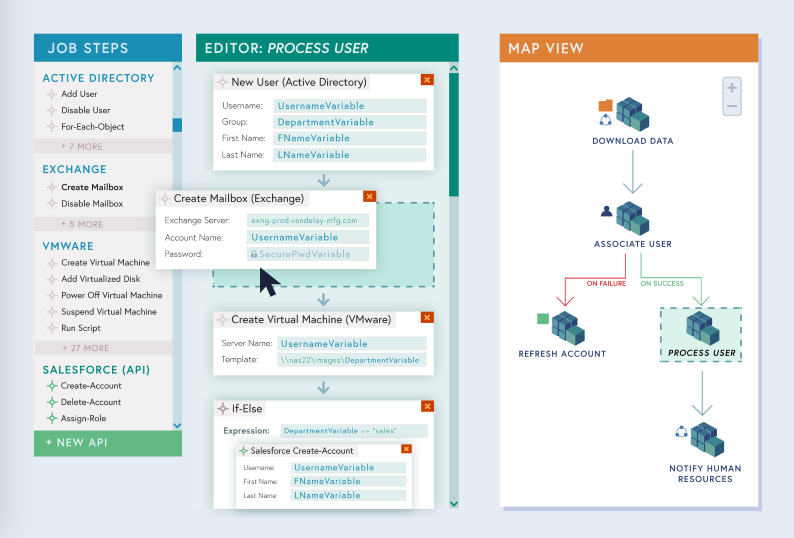Top Advice To Choosing Legacy application modernization with Low-code
Wiki Article
Benefits Of Low-Code Application Development In Terms Of Accessibility To Non-Developers
Low-code applications greatly improve accessibility for non-developers. They are often referred to as "citizen developers" because of several important factors. Intuitive Visual Interfaces:
Drag-and-Drop Builders : Low-code platforms have drag-and-drop interfaces, which allow people who are not developers, and without the necessity of writing code, to create visual applications. Development is now more accessible for those with no technical background.
WYSIWYG: WYSIWYG editors are "What you See is What you get" editors that permit users to design workflows and interfaces that are similar as the final product. It makes it much simpler to understand and use.
Simple Workflow and Logic Design
Visual Workflow Design: Users can quickly design business processes and application logic using diagrams, flowcharts and models. They are simpler to work with than traditional coding.
Pre-built Logical Components: Many low-code programs come with built-in components for logic (e.g. loops, conditions) which are easily configurable. This reduces the need to code complex programs.
Reusable Components and Templates
Template libraries that are pre-built: Many low code platforms provide a library that covers the most popular types of applications, providing those who are not developers a base that they can build upon and alter.
Reusable Widgets and Modules: Users can use modular and reusable widgets which can be created faster, reducing the time needed to create them and eliminating the need for technical expertise.
Guided Development Tutorials and Guided Development:
Step-by-Step Instructions Platforms typically provide tutorials that are on screen, guided development routes as well as other tools to assist developers who are not developers create apps.
Interactive Tutorials Interactive tutorials are hands-on and interactive that allow users to learn by doing. This increases their confidence in the platform.
Integration with tools already in use
Seamless Integrate: Low code platforms are built to integrate seamlessly with the existing systems and tools within business (e.g. the CRM or ERP) This lets non-developers to develop applications that work with current workflows.
APIs/Connectors: The built-in APIs/connectors allow non-developers to connect their applications to other services.
Collaboration Features:
Team Collaboration: Features, such as real-time collaboration and shared workspaces, allow non-developers and professionals to work together efficiently.
Access control based on Role: Non developers can be assigned specific roles with the appropriate access levels. This enables them to contribute to the development without compromising security or functionality.
Automated Testing, Debugging and Debugging
Low-code platforms include tools for testing and debugging which are built into. They automate this process, making it easier for nondevelopers to ensure that their apps work.
Error Highlighting: If problems arise, the platform highlights mistakes and suggests solutions by guiding non-developers through troubleshooting techniques.
The main benefit of low-code development for accessibility to non-developers is its capacity to make development more accessible. Platforms that use low-code empower business users by providing them with easy-to-use, visual and guidance tools. They are then able to actively take part in the process of developing and maintaining the applications. View the top rated Low-code Platform for application development examples for website advice including build with docker, rapid app development, cross platform app development, azure sql databases, microsoft azure sql, push alerts, low code development platforms, sso azure, push alerts, multiplatform mobile app development and more.

Benefits Of Low-Code Application Development With Respect To Governance And Security
Low-code applications offer a number of benefits in terms of security and governance, both of which are crucial to ensure that applications are compliant, secure, and well-managed throughout their lifespan. These are the major advantages.
Unified Manage Console: Lowcode-based platforms usually provide a management console allowing administrators to supervise and manage applications.
Role-Based Access Control RBAC: These platforms have powerful role-based controls that permit administrators to set access rules. This ensures that only authorized users are able to access or modify specific parts of an app.
Compliance and Regulatory Conformity:
Many low-code platforms come with built-in compliance functions. For instance, they are built in line with the standards of the industry as well as regulations and laws (e.g. HIPAA, GDPR). They provide frameworks and tools that help to ensure applications meet these requirements.
Audit Trails and Logging Complete audit trails and logs can be integrated to allow companies to monitor changes as well as monitor access to ensure the compliance.
Additional Security Measures
Data Encryption : Low-code platform typically provide built-in encryption of data both in transit and at rest. This ensures that data sensitive information is protected.
Security Certifications: A lot of providers of low-code services have security certificates, such as ISO 27001 or SOC 2, which demonstrate that they follow strict standards. These certifications provide additional assurances to users.
Automated security updates:
Regular Patching and Updating: Lowcode platforms usually provide regular security updates. These patches guard applications against the latest threat without requiring developer intervention.
Security Monitoring - Continuous monitoring for security is typically included. It provides real-time insight and alerts regarding potential security threats.
Data Governance
Data Access Policies These platforms allow organizations to determine and apply their policies on data access to ensure that only authorized users are able to access the data and that it's being used appropriately.
Data Masking Anonymization Data Masking Tools: Built-in data masking tools and features to anonymize data help protect sensitive data, especially during the development and testing phases.
Consistent Lifecycle Management of Applications
Pipelines for Development and Delivery Low-code platforms typically include integrated pipelines for development and delivery pipelines which incorporate security tests. Security is guaranteed throughout the lifecycle.
Version Control: Integrated version control allows for the management of changes and ensures that any changes to the application can be tracked and reverted if necessary while ensuring the integrity of the application.
Authorization and Authentication of Users:
Single Sign-On (SSO) Support for single sign-on as well as other advanced authentication techniques simplify management of users and improves security.
Multi-Factor Authentication Most platforms have integrated support for multi-factor authentication. This adds an additional layer of security to the applications.
Monitoring of Policy Enforcement
Low-code platforms include templates for policies predefined and can help organizations implement security and governance policies as well as governance policies.
Compliance Monitoring Tools - These tools provide continuous monitoring of compliance status, and also provide the ability to report, making it easier to find and correct potential issues.
Integration into Existing Security Infrastructure
Seamless Integration: Platforms with low-code technology are designed to seamlessly integrate with the existing tools and infrastructure such as SIEM (Security Information and Event Management solutions) and firewalls.
API Security API Security Features: Built-in API security functions ensure that integrations with external systems are secure, protecting data and maintaining application integrity.
Training and best practices
Many platforms offer guides and best practice to secure development of applications. They can help developers who are not developers to meet security standards.
Security Training: Certain low-code vendors provide security training and resources that help users understand how to design and build secure applications.
The security and governance capabilities of low-code apps ensure they are managed and built in a safe and secure manner. These platforms have the tools, frameworks, and regulatory compliance necessary to secure sensitive data of customers and enforce policy. They also ensure compliance with regulatory requirements and ease the management of and oversight of the development process. Check out the best Legacy application modernization with Low-code blog for more tips including lowcode no code, multiplatform mobile app development, stored sql procedures, multiplatform mobile app development, ms azure sql, cross platform mobile dev, push notifications, low code platforms, database in azure, mobile app development platforms and more.

Advantages Of Developing Applications Using Low-Code In Terms Of Limitations And Customization
Low-code development is an approach that is balanced to address issues, while allowing the possibility of customizing. Here are some benefits:
: .
Simplified Development : Low-code platform simplifies development by providing templates and components that are pre-built. This allows rapid development and deployment.
Guided Workflows: Many platforms provide guided workflows or wizards that help developers navigate difficult procedures. This reduces the risk of making mistakes and guarantees consistency.
Scalability Solutions
Built-in Scalability: Low-code platforms often include features that support scalable architecture, allowing applications to handle increased loads without major redevelopment.
Performance Monitoring Performance Monitoring Tools: Integrated performance monitoring tools and optimization ensure applications are as efficient as they can be, no matter the size of their application.
Security and Compliance
Integrated security features of Low-code come with built-in measures of security, such as encryption. Access control based on role and automated compliance check to address the most prevalent security issues.
Platforms frequently update their compliance and security measures to ensure that applications are protected against new threats.
Customization capabilities:
Extensibility:
Custom Code Integration : Low-code platform often allows the integration of custom codes (e.g. JavaScript, Python) that allows developers to extend the functionalities beyond the standard offerings.
Developers can create custom plugins and modules with functions that can be that are tailored to the specific requirements of a business.
APIs and Integration
API Support: Comprehensive API support permits seamless integration of external systems and services. This allows for large customization and connection.
Third-Party Service: Low-code platforms offer pre-built connectors to popular third-party service providers, making it easier to add and modify applications.
Flexible UI/UX:
Customizable interfaces: Users can modify and create their own user interfaces that will give an experience that is more customized.
Responsive design: The capability to customize applications for different screens and devices is included.
Business Logic Customization
Visual Workflow Builders This tool lets developers build complex processes with minimal or no coding. They can design workflows and business logic in a visual manner.
Platforms offer conditional logic to accommodate certain business rules or situations.
Data Management:
Custom Data models: Developers are able to define custom data model to satisfy specific requirements of an application and make sure that data handling complies with business requirements.
Advanced Data Processing: Integration with the latest tools and capabilities for data processing permits customization of the way that data is analysed and used in the application.
Balance Customization and Limitations:
Frameworks and Standards
Best Practices: Low-code platform promotes conformity to industry standards and best practices. This can be helpful to ensure high-quality apps that are scalable, secure and reliable.
Governance Frameworks. The built-in governance frameworks guarantee that modifications will not compromise the security, integrity, or compliance of the software.
Iterative Development & Feedback
Rapid Prototyping. The capability of quickly prototyping and testing modifications allows developers to iterate the application according to the feedback of users. This helps to refine the application to better satisfy users' needs.
Low-code platforms are built to allow for continuous improvement. This allows for customizations and improvements as requirements for business change.
User Empowerment
Giving Citizen developers the tools they need: The low-code interfaces that are intuitive allow non-developers to create customisations. This boosts the number of people who can contribute to enhance and modify applications.
Training and Support Tools: A lot of platforms offer an extensive set of training and support resources to allow users to customize their applications without jeopardizing their performance or stability.
Low-code applications offer a flexible framework that can be tailored to meet specific needs. This balance enables businesses to develop and maintain applications that function, are tailored to their particular requirements and meet the highest standards in terms of security, quality, and scaleability.
